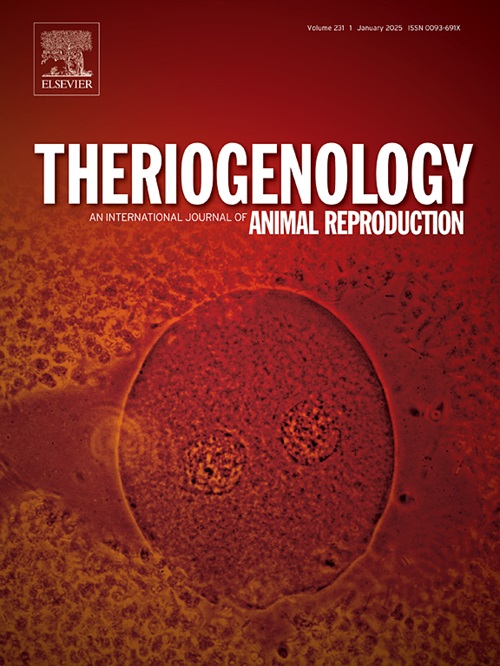Disease risk of in vitro produced embryos: A review of current commercial practices in the context of international trade with emphasis on bovine embryos
IF 2.4
2区 农林科学
Q3 REPRODUCTIVE BIOLOGY
引用次数: 0
Abstract
The ever-evolving procedures of the practice of in vitro production (IVP) of embryos has well outpaced the ability of governments and institutions to create standardized rules and regulations around the global trade of these reproductive products. There are several challenges related to identifying and quantifying disease transmission risk in IVP embryos, not the least of which is a lack of published information. The International Embryo Technology Society (IETS) Health and Safety Advisory Committee (HASAC) has identified and addressed several of the challenges related to the potential for disease transmission via IVP embryos. This review will outline the current sanitation practices recommended by the IETS for in vivo derived (IVD) embryos, as well as the current practices at most in vitro fertilization (IVF) labs and will present the case that IVP embryos are not only just as safe as IVD embryos from a disease transmission risk standpoint, but perhaps may even be safer than IVD embryos, as the oocyte, zygote, and embryo in the in vitro production system has no contact with the downstream reproductive anatomy (fimbria, isthmus, oviduct, or uterus) of the donor female.
体外生产胚胎的疾病风险:以牛胚胎为重点,审查国际贸易中的现行商业做法
胚胎体外培养(IVP)实践的程序不断发展,远远超过了政府和机构围绕这些生殖产品的全球贸易制定标准化规则和法规的能力。在识别和量化 IVP 胚胎中的疾病传播风险方面存在一些挑战,其中最主要的挑战是缺乏已公布的信息。国际胚胎技术协会(IETS)健康与安全咨询委员会(HASAC)已经确定并解决了与 IVP 胚胎传播疾病的可能性有关的几个难题。本综述将概述 IETS 建议的体内衍生 (IVD) 胚胎的现行卫生做法,以及大多数体外受精 (IVF) 实验室的现行做法,并将说明从疾病传播风险的角度来看,IVP 胚胎不仅与 IVD 胚胎一样安全,甚至可能比 IVD 胚胎更安全、由于体外生产系统中的卵母细胞、合子和胚胎与供体女性的下游生殖解剖结构(边缘、峡部、输卵管或子宫)没有任何接触,因此体外受精胚胎不仅与 IVD 胚胎一样安全,甚至可能比 IVD 胚胎更安全。
本文章由计算机程序翻译,如有差异,请以英文原文为准。
求助全文
约1分钟内获得全文
求助全文
来源期刊

Theriogenology
农林科学-生殖生物学
CiteScore
5.50
自引率
14.30%
发文量
387
审稿时长
72 days
期刊介绍:
Theriogenology provides an international forum for researchers, clinicians, and industry professionals in animal reproductive biology. This acclaimed journal publishes articles on a wide range of topics in reproductive and developmental biology, of domestic mammal, avian, and aquatic species as well as wild species which are the object of veterinary care in research or conservation programs.
 求助内容:
求助内容: 应助结果提醒方式:
应助结果提醒方式:


